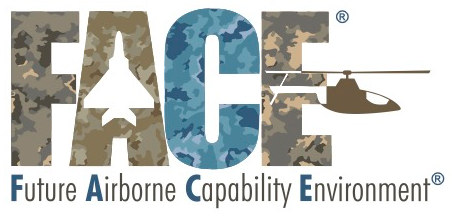Advancing Defense Technology: MOSA, SOSA, and FACE

Integrating new technology into military and aerospace systems presents a wide variety of challenges. Modern defense and aerospace sensor systems are highly complex, and final products often contain components from different vendors. Integrating these components into a system can be challenging due to differences in interfaces, protocols, and/or architectures. Further, rapid technological advancements can create compatibility issues between new and legacy components, complicating the issue.
To meet these challenges, the US Department of Defense (DoD) has mandated the use of a Modular Open Systems Approach (MOSA) in technology development.
What is MOSA?
In short, MOSA is a strategy used by the Department of Defense (DoD) to make their systems more competitive and affordable throughout their lifespan. It involves designing systems with open standards and modular structures, allowing components to be easily added, changed, or removed.
This approach uses standardized interfaces and architectures across applications. In practice, MOSA allows the DoD to design systems with separate but well-connected modules that can be sourced from different vendors. The Open Group – a global association that enables the achievement of business objectives through technology standards – has established two consortia to address the challenges associated with MOSA.
Understanding SOSA

The Open Group Sensor Open Systems Architecture (SOSA) Consortium is concerned exclusively with sensor systems. The goal of SOSA is to promote interoperability, modularity, and reusability in sensor systems across different platforms and vendors.
The specific goals and objectives of the SOSA Consortium can be divided into a few key areas:
- Interoperability – Ensuring that sensor components from different vendors can work together seamlessly within a system.
- Modularity – Designing sensor systems in a way that allows components to be easily replaced or upgraded without significant redesign.
- Reusability – Developing standards that facilitate the reuse of sensor components across multiple platforms and projects.
- Scalability – Enabling sensor systems to scale from small, low-power devices to large, high-performance systems as needed.
- Affordability – Reducing development and procurement costs by leveraging common standards and promoting competition among vendors.
The SOSA Consortium is aimed at establishing guidelines for Command, Control, Communications, Computers, Intelligence, Surveillance and Reconnaissance (C4ISR) systems. Ultimately, SOSA seeks to increase flexibility in the selection and acquisition of sensors and subsystems that provide sensor data collection, processing, exploitation, communication, and related functions over the full life cycle of the C4ISR system.
In pursuit of these goals, the consortium has developed the Technical Standard for SOSA Reference Architecture (currently up to version 2.0). The Technical Standard defines architectural modules – and related software, functions, and behaviors – with defined open interfaces. This enables the development of capabilities made up of common components. The Technical Standard incorporates specifications for software components and hardware elements, along with electrical and mechanical interfaces composing the SOSA sensor element.
Understanding FACE

The Open Group Future Airborne Capability Environment (FACE) Consortium is an industry-government partnership focused on developing open standards for avionics systems in aerospace and defense applications. Much like the SOSA consortium, the primary goal of the FACE Consortium is to promote interoperability, portability, and reusability of software applications across different airborne platforms. By establishing common standards and architectures, the FACE Consortium aims to streamline the development, integration, and maintenance of avionics systems, while also reducing costs and time-to-market.
Again, similar to SOSA, FACE has developed its own Technical Standard. This standard provides guidelines for creating portable and interoperable software components, known as FACE-conformant components, which can be easily integrated into avionics systems across various platforms. By adhering to the FACE Technical Standard, avionics developers can create platform-independent software applications, allowing them to be reused across different aircraft types and missions. This approach enhances flexibility, scalability, and maintainability of avionics systems, while also enabling technology refresh and upgrades without requiring extensive rework.
Applying SOSA & FACE Open Standards
MOSA, overall, and the two Open Group consortiums – SOSA and FACE Consortiums – in particular, provide a framework for designing and acquiring defense systems that are more flexible, interoperable, and cost-effective. By adopting MOSA principles, defense organizations can better meet their mission requirements while also reducing risks and lifecycle costs associated with system development and sustainment.
Sealevel’s team has worked extensively with contractors in the defense and aerospace sector developing SOSA-aligned and FACE-conforming products, utilizing MOSA principles. Over the past 10 years, Sealevel has designed and manufactured more than 13 SOSA-aligned carrier boards for one of the leading suppliers of tactical and enterprise communications equipment. Additionally, Sealevel worked with one of the leading military contractors to redesign an aircraft testing and diagnostic system to meet SOSA and FACE technical requirements. In partnership with the SOSA Consortium and other organizations, Sealevel is committed to the promotion and adoption of open systems.
Categories:
